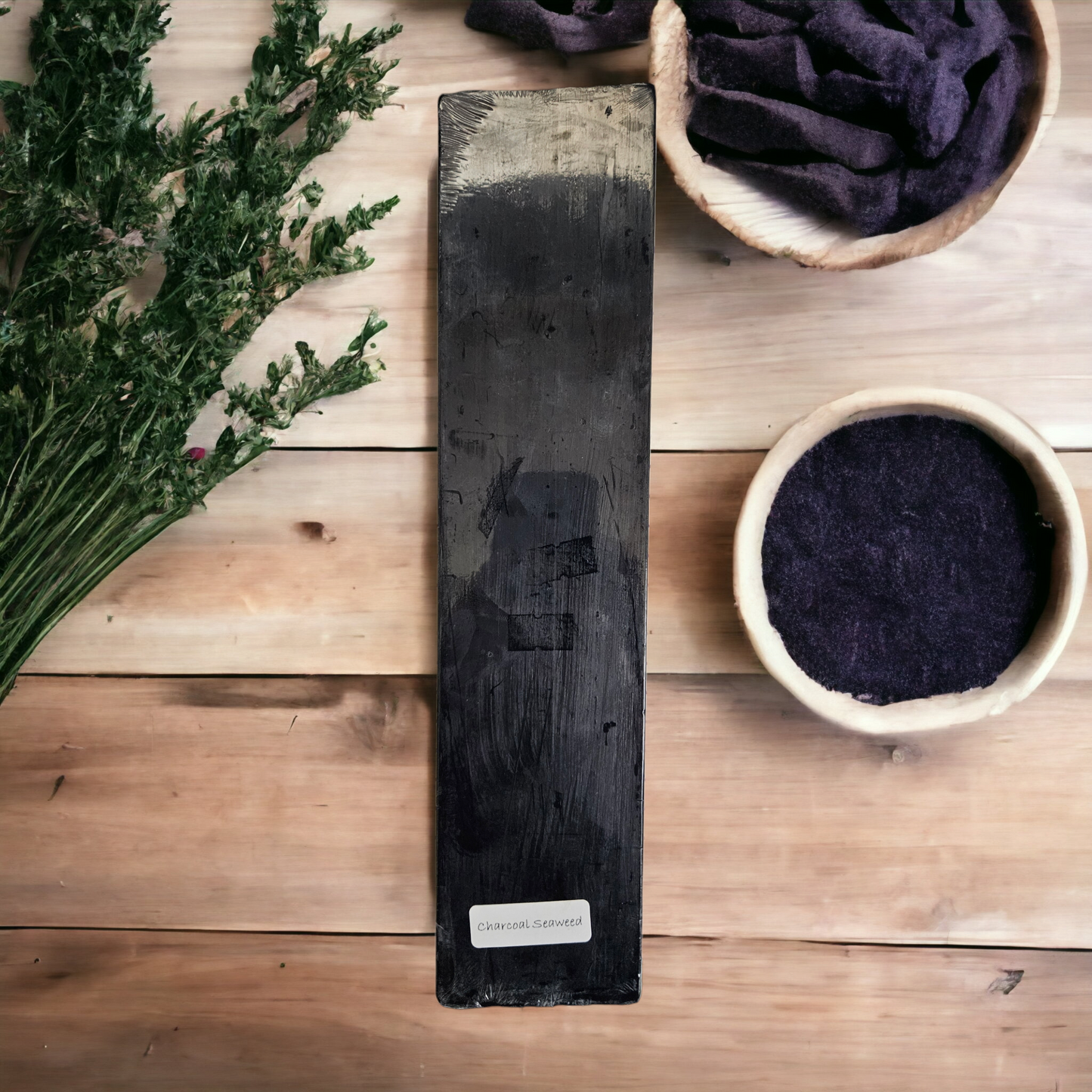Romaqo
Activated Charcoal and Seaweed Glycerine Melt and Pour Soap Base 1kg
Activated Charcoal and Seaweed Glycerine Melt and Pour Soap Base 1kg
Couldn't load pickup availability
This soap is hand-made. Only plant Glycerine is used in manufacturing. Preservative Free.
Opaque, black.
Ingredients:
STEARIC ACID
PROPYLENE GLYCOL
SODIUM XYLENE SULPHONATE
SODIUM LAURETH SULPHATE
PALM KERNEL OIL
CANE SUGAR
PLANT BASED GLYCERINE
AQUA
SODIUM HYDROXIDE
ACTIVATED CHARCOAL
SEAWEED
Properties:
Plant based Glycerine soap
Ph-Balanced
Hypo-Allergenic
Bio-degradable
Strong lathering properties
Strong Moisturising properties
Contains no animal products
Contains no harmful chemicals
Contains no preservatives
These soaps are so simple to cut and mould to your own shapes, making it perfect for diy soap makers. The benefits make this soap a must in every household.
Benefits:
Pure glycerine soap is all-natural, unlike many over-the-counter soaps. Alcohol, perfumes, and other chemical-based components that could irritate your skin are not present.
Because of this, glycerine soap is a wonderful alternative for those with sensitive skin.
Whether from hot water or harsh treatments, bathing frequently strips your skin's natural oils. Glycerine can aid in retaining the moisture in your skin and preventing over-drying.
This could be especially helpful if you have a condition that causes dryness, like:
acne
dermatitis (eczema)
dry skin
psoriasis
rosacea
Activated charcoal and seaweed glycerine melt and pour soap combines the benefits of both activated charcoal and seaweed with the moisturizing properties of glycerine soap. Here are some potential benefits of using such soap:
- Deep Cleansing: Activated charcoal is known for its ability to absorb impurities and toxins from the skin, making it effective for deep cleansing and detoxification.
- Skin Detoxification: Activated charcoal's absorbent properties can help draw out dirt, oil, and pollutants from the pores, leaving the skin feeling clean and refreshed.
- Minimizes Pore Appearance: Activated charcoal can help minimize the appearance of pores by removing excess oil and debris that can contribute to their visibility.
- Hydration: Glycerine is a humectant that attracts moisture to the skin, helping to keep it hydrated and supple.
Skin Nourishment: Seaweed is rich in vitamins, minerals, and antioxidants that nourish the skin and support its overall health.
Anti-Inflammatory: Seaweed contains anti-inflammatory compounds that can help soothe irritated skin and calm redness.
- Skin Revitalization: The combination of activated charcoal and seaweed can contribute to revitalizing tired-looking skin, promoting a more vibrant appearance.
- Gentle Cleansing: Glycerine soap is mild and suitable for various skin types, making it a gentle option for daily cleansing.
- Non-Toxic and Natural: Glycerine melt and pour soap is often made from natural ingredients, making it a safer choice for those who prefer to avoid synthetic chemicals.
DIY Potential: Glycerine melt and pour soap is easy to work with, allowing you to create your own customized soap bars with various colours, shapes, and additional natural ingredients.
Remember, individual skin reactions can vary, so it's a good idea to do a patch test before using any new product, especially if you have sensitive skin or known allergies.
Making melt-and-pour soap with these glycerine bases couldn't be simpler; below are instructions to support you in your soap-making journey!
Note: When working with melted bases, exercise caution at all times. Keep away from children and pets. Own testing and recipes are necessary.
Instructions
Enough soap foundation should be cut off to fill your mould. (You can fill your mould with water and pour it into a measuring cup to check the amount you need; 1ml equals 1 gram. If you have a square or rectangle mould, you can calculate the volume by multiplying length by width by height).
Place the smaller, approximately 1x1cm cubes of soap foundation in the jug.
In the microwave, heat the jug containing the soap base in bursts of no more than 10-15 seconds while stirring in between. Alternately, melt the soap in a double boiler or melting pot over medium heat, stirring often. Be careful not to boil the base. Gently whisk the mixture when all the soap blocks have melted.
Isopropyl alcohol should be lightly sprayed onto your mould (this helps the soap to adhere nicely to the mould and gets rid of surface tension making sure no bubbles are trapped between the soap and the mould)
Gently pour your soap into the mould. Rubbing alcohol should also be sprayed on the top to remove any bubbles.
Before removing the soap from the mould, let it completely harden. Depending on the size of your mould, this could take anywhere from 30 minutes to several hours. When the soap has dried, take it out of the mould and wrap it in plastic wrap (such as Glad Wrap) or shrink wrap as soon as you can. Glycerine is a humectant, attracting moisture from the air to itself, which is why it is moisturising for your body. Because of this, it also enables the soap to suck moisture from the air, causing glycerine dew drops on the soap called sweating.
Now your soap is done and ready to use. Enjoy!
Share








